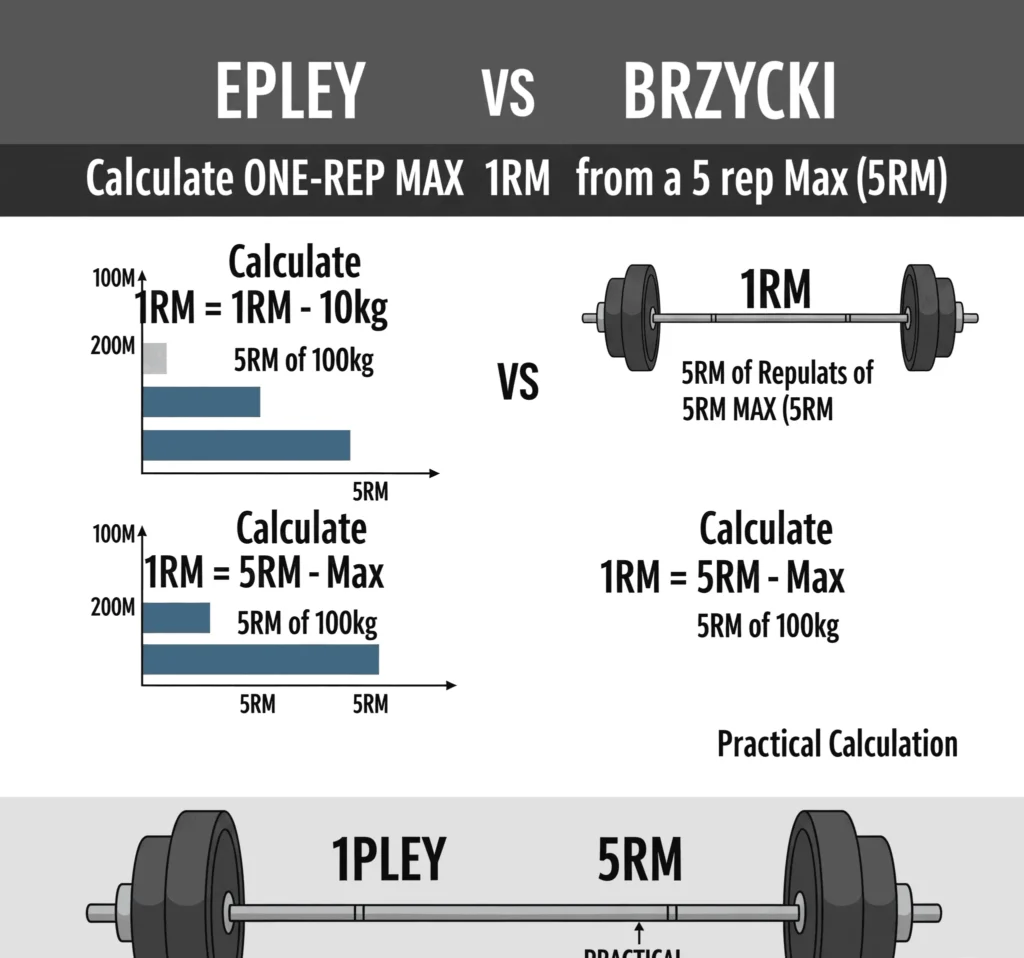Knowing your limits is a cornerstone of effective strength training. While pushing for a new one-rep max (1RM) can be exhilarating, it’s not always practical or safe. This is where understanding how to convert 5RM to 1RM becomes an invaluable tool in your fitness arsenal. By using your 5-rep max—the heaviest weight you can lift for five consecutive repetitions with proper form—you can get a highly accurate estimate of your true one-rep max without the risks associated with maximal attempts. This guide will walk you through everything you need to know about this essential conversion, from the most reliable formulas to practical applications for your training.
What Exactly is a 5-Rep Max (5RM)?
Before we dive into the conversion, let’s clarify what a 5-rep max is. It’s not just any set of five reps. Your 5RM is the absolute maximum weight you can successfully lift for five repetitions, with the fifth rep being a true struggle to complete while maintaining correct form. If you could have squeezed out a sixth rep, you haven’t found your true 5RM yet. It’s a sweet spot that indicates a high level of strength and is a common benchmark in many strength training programs.
Why You Should Convert Your 5RM to 1RM
You might be wondering why you should bother with calculations instead of just loading up the bar and going for it. There are several compelling reasons to estimate your 1RM from your 5RM:
- Enhanced Safety: Regularly testing your true 1RM can be physically and mentally taxing. It places a significant strain on your central nervous system and increases the risk of injury, especially if your form falters. Converting your 5RM provides a much safer alternative.
- Smarter Programming: Most effective strength training programs are built around percentages of your 1RM. Knowing your estimated 1RM allows you to tailor your workouts for specific goals, whether it’s building pure strength, muscle size (hypertrophy), or endurance.
- Consistent Progress Tracking: Estimating your 1RM from your 5RM allows you to consistently track your strength gains over time without the need for frequent, high-risk max-out sessions.
- Breaking Through Plateaus: When you hit a training plateau, understanding your strength numbers can help you and your coach make informed decisions about how to adjust your training volume, intensity, and frequency to stimulate new progress.
How to Accurately Convert 5RM to 1RM
The most common and trusted way to convert your 5RM to a 1RM is by using a mathematical formula. While no formula is 100% perfect for everyone due to individual differences in muscle fiber type, training experience, and exercise mechanics, several have proven to be remarkably accurate.
Popular Formulas to Convert 5RM to 1RM

Here are two of the most widely used and respected formulas for estimating your one-rep max:
The Epley Formula
Developed by Boyd Epley, the Epley formula is one of the most common methods used in strength and conditioning. It’s simple and effective, especially for lower rep ranges like a 5RM.
The Formula: 1RM = Weight × (1 + (Reps / 30))
Example: Let’s say your 5RM for the bench press is 225 lbs.
- 1RM = 225 × (1 + (5 / 30))
- 1RM = 225 × (1 + 0.1667)
- 1RM = 225 × 1.1667
- Estimated 1RM = 262.5 lbs
The Brzycki Formula
Created by Matt Brzycki, this formula is another gold standard in the fitness community. It often gives slightly more conservative estimates than the Epley formula, which can be beneficial for those who prefer to err on the side of caution.
The Formula: 1RM = Weight / (1.0278 - (0.0278 × Reps))
Example: Using the same 225 lbs for 5 reps:
- 1RM = 225 / (1.0278 – (0.0278 × 5))
- 1RM = 225 / (1.0278 – 0.139)
- 1RM = 225 / 0.8888
- Estimated 1RM = 253.1 lbs
As you can see, the two formulas provide slightly different results. It’s a good practice to use both and consider the average as a reliable starting point for your training percentages.
Practical Considerations and Best Practices
While these formulas are excellent tools, keep the following in mind for the most accurate and useful results:
- Form is Paramount: Your 5RM should be performed with impeccable form. If your technique breaks down, the weight is too heavy, and the resulting 1RM estimate will be inaccurate.
- Exercise-Specific Differences: The accuracy of these formulas can vary between exercises. They tend to be more accurate for compound lifts like the squat, bench press, and deadlift.
- Individual Variation: Everyone is different. Your unique physiology may mean that one formula is consistently more accurate for you than another. Track your estimated 1RMs and compare them to any actual 1RMs you perform to see which formula works best for you.
For a deeper dive into evidence-based workout routines and the science behind getting stronger, consider reputable resources like the American Council on Exercise (ACE). Their extensive library of articles on strength training fundamentals provides trusted, science-backed information for everyone from beginners to seasoned athletes.
Ready to Find Your 1RM? Use Our Calculator!
Tired of doing the math yourself? We’ve made it easy for you. Our user-friendly 1 Rep Max Calculator takes the guesswork out of the equation. Simply enter the weight you lifted and the number of reps you completed, and get an instant, accurate estimate of your one-rep max.
👉 Try the 1 Rep Max Calculator Now! 👈
Using our calculator will help you train smarter, stay safer, and unlock your true strength potential.
Frequently Asked Questions (FAQs)
How accurate are 1RM calculators?
1RM calculators that use established formulas like Epley’s and Brzycki’s are generally very accurate, especially when using a true 3-5 rep max as the input. While there might be slight variations, they provide a reliable estimate for programming purposes.
How often should I test my 1RM?
For most non-competitive lifters, testing a true 1RM is only necessary once or twice a year. It’s much more productive to use your estimated 1RM to guide your training and re-calculate it every 4-6 weeks based on a new rep-max test (like a 5RM).
Can I use this conversion for any exercise?
While you can, the formulas are most accurate for major compound exercises. For isolation exercises or machine-based movements, the carryover to a 1RM may be less predictable.
What’s the difference between a 5RM and a set of 5 in my workout?
A 5RM is an all-out effort. A set of 5 in your regular workout is typically a sub-maximal effort, meaning you could have performed more reps. Don’t confuse your working sets with a true rep-max test.
By understanding how to convert your 5RM to 1RM, you’re taking a significant step toward more intelligent and effective training. You’ll be able to optimize your workouts, track your progress accurately, and stay on the path to achieving your strength goals safely.






